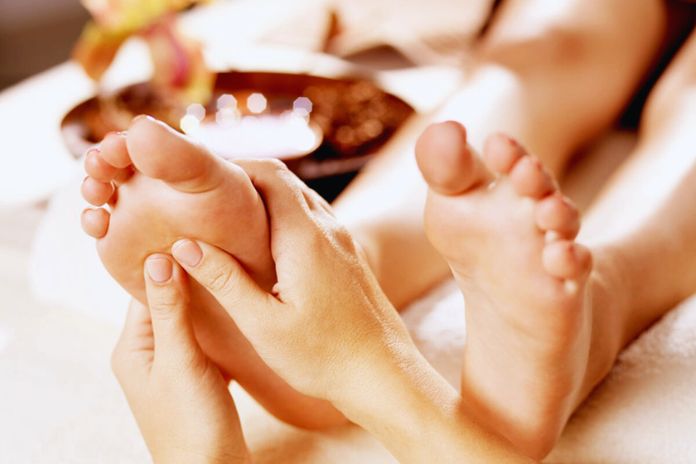Alternative medicine to rebalance The foot is a wonderful instrument. With its 20 muscles and 107 ligaments, it already supports the weight of our body every day. Incredible but true, he still surpasses himself in plantar reflexology. A short guide to this alternative medicine that puts our health back on its feet.
Plantar Reflexology: Definition And Operation
The foot, a miniature representation of our body? Almost. Plantar reflexology considers that each part of our organism is mapped on a targeted foot region. By exerting pressure with the fingertips on specific points, the ” reflex zones, “we stimulate the corresponding part of the body, which will produce a physiological reaction. A signal is sent to the brain via the nervous network and then delivered to the organs concerned when you think your feet have no less than 7,200 nerve endings!
Plantar Reflexology: A Variable Pattern
Remember that the internal organs occupy the bottom of the foot, while the top corresponds to our ventral face. Logically, the parts of the left hemibody are projected on the left foot and those of the right hemibody on the right foot. As for the even or central organs, they are represented on both sides.
You will easily find maps representing the different areas of the foot on the Web. Nevertheless, you will find with surprise that they present notable divergences. Why? This alternative medicine is based on essentially empirical and constantly evolving knowledge. In addition, the locations of the reflex points vary slightly according to the morphology of each one.
What Are The Benefits Of Foot Reflexology?
No, foot reflexology is not limited to a simple foot arch massage! It aims to restore the balance of body and mind (homeostasis) by encouraging the body’s self-healing process. Depending on the areas worked, plantar reflexology revives vital energy, releases physical or emotional blockages, and relieves certain everyday ailments. No confusion: it is not a treatment intended to replace allopathic medicine but an interesting supplement to improve your quality of life. Here is a non-exhaustive list of its fields of action:
- muscle-articular tensions;
- skin problems;
- digestive disorders ;
- breathing difficulties;
- fatigue and sleep disturbances;
- lymphatic and blood circulation, immune system ;
- stress, anxiety, emotional management;
- support in the context of serious or chronic pathologies.
Reflexology: Contraindications And Side Effects
Reflexology is for everyone, from infants to older people. However, it requires the greatest caution for pregnant women: soliciting certain reflex zones can lead to premature contractions. It remains prohibited before the third month of pregnancy. However, this alternative medicine is strongly discouraged for people with foot trauma, fungus or warts, recent phlebitis, or heart problems.
Why Go To A Reflexologist?
Beyond a fair knowledge of the reflex points, the reflexologist has a holistic vision of the individual, which is essential for effective care. The patient is thus considered as a whole, both physically and psychologically.
How Does A Foot Reflexology Session Take Place?
The first session generally consists of a preliminary interview to question the person’s state of health. During a classic session, the patient lies down on an ergonomic table. The practitioner first identifies the tension points by scanning the feet and ankles. Generally, starting with the right side, the seat of the spine, and the diaphragm, it massages the foot and then focuses on the blocked areas. He then completes the session with a relaxing massage. A session lasts an average of 45 minutes to 1 hour.
Foot Reflexology And Training
Small warning: the reflexologist is not subject to a training obligation because this profession remains unregulated. Since 2015, there are still training organizations registered in the National Directory of Professional Certifications (RNCP) authorized to issue the title of a reflexologist. Refer to the directory of the Indian Federation of Reflexologists to find a trusted practitioner.
Plantar Reflexology And Reimbursement Of Mutuals
Social Security does not cover reflexology. However, it may be partially reimbursed by your health insurance fund. Many offer an annual fee dedicated to alternative medicine, capped on average at €300 per year. Do not hesitate to contact your complementary friend to find out more.
Do-It-Yourself Plantar Reflexology
Would you like to learn reflexology at home? Here are two simple exercises to evacuate the day’s tensions.
Recover Your Energy With A Tennis Ball
Start by positioning your ball under one of your feet. Roll it under the plant by drawing circles and pressing more or less strongly according to your feelings. Go through the entire foot arch, focusing on the heel, the front, and the toes. A 5-minute massage to be performed in the morning when you get up and in the evening when you get home from work: dynamism and relaxation guaranteed!
Plantar Reflexology For Weight Loss
Admittedly, reflexology alone will not make you lose those few extra pounds on the scale. However, it can give you a little boost to regulate your appetite and counter your untimely sugar cravings. To do this, massage the pulp of the big toes deeply with your fingers: this reflex zone is directly connected to the brain’s satiety centers!
Read Also: Hair Beauty: Which Ayurvedic Powder Is Made For You?
